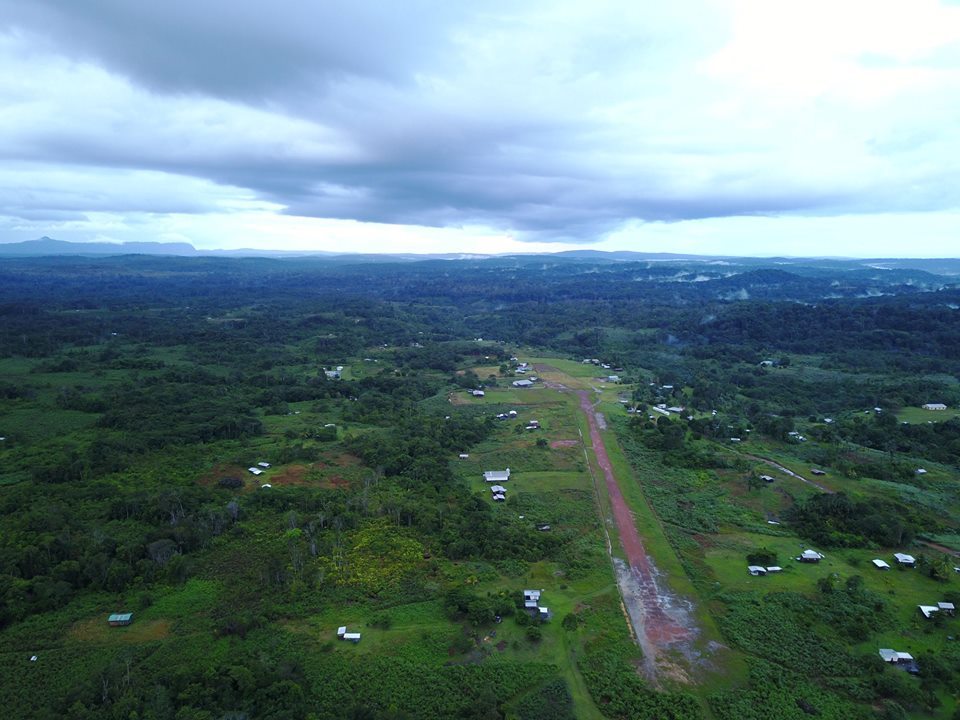Potaro-Siparuni (Region 8) is a region located in the country Guyana, which borders the region of Cuyuni-Mazaruni to the north, the regions of Upper Demerara-Berbice and East Berbice-Corentyne to the east, the region of Upper Takutu-Upper Essequibo to the south and Brazil to the west. The main towns in the region are Kangaruma, Orinduik, Potaro Landing, Mahdia, Saveretik and Tumatumari. Among the many villages and towns that are in Region 8 lies a beautiful place called the Kopinang Mission. This article will reveal some history about that village, its features and the lifestyle of the people.
Communities Within Region 8 (Potaro Siparuni)
- Arnik Village
- Campbelltown
- Chenapou (Chenapowu Village)
- El Paso
- Enaruko Village
- Holmia
- Ipichau (Ipishau, Ipisháu, Ipisiau Village)
- Itabac
- Kamana Village
- Kanapang Village
- Kangaruma
- Karisparu Village
- Kato (Kato Village, Karto)
- Kopinang Mission
- Kukuieng (Kukui-Eng Village)
- Kurikebaru (Kurikebary, Kurukabaru, Kurukabaru Village)
- Mahdia
- Maicobi
- Maipuri Landing
- Makari
- Monkey Mountain
- Orinduik
- Owenteik
- Paramakatoi (Paramahatoi)
- Potaro Landing
- Princeville
- Puwa (Puwa Village)
- Saint Mary (Saint Mary’s)
- Saveretik
- Sisipelin (Sisipelin Village)
- Taruka
- Tumatumari
- Tumatumari Landing
- Velgrad
- Waipa Village
- Wandaik (Wandaik Village)
- Wandapa (Wandapa Village, Waudapa Village)
- Wiapri
About The Kopinang Mission (Patamona Tribe)
Kopinang is described as “one of the most beautiful villages in Guyana.” It is located in the North Pakaraimas (Potaro Siparuni) on both banks of the Kopinang river and is home of the indigenous nation, the Patamona. For generations, the Pakaraima Mountains were home to Amerindian peoples, particularly the Patamona tribes. Even though that Paramakatoi is today an indigenous community dominated by Amerindian tribes, it has many buildings constructed in the traditional technique of thatching. In the early part of the 20th century, Paramakatoi was thought to have been founded. In 1945, Reverend J.M. Walton began his pioneering missionary work in Paramakatoi among the Patamona Indians. The indigenous community is the home of Ovid Williams, who was born in 1956 and is known to be Guyana’s first indigenous pilot.
Tip: Paramakatoi is a community in the Potaro-Siparuni Region of Guyana, located at 4°43′0″N 59°42′0″W, Altitude 970 metres. It is 11 miles east of Kurukabaru. Paramakatoi functions as a regional centre for the catchment area. And is the largest and most developed of Amerindian communities in the region. There is an airfield (Airport code PMT) at Paramakatoi.
Features Of The Kopinang Mission
Rock Paintings & Cave – The land around Kopinang Village bears witness to a long-term interaction between people and their surroundings. There are rock paintings close by and a cave with two entrances into which, according to local stories, enemies (Akawaio and Arekuna) were lured and killed. The older residents explain that their grandparents told them often about the time of tribal wars in the region and how they had to defend themselves against the neighbouring peoples.
Sacred Caves – The land also features several sacred caves that were used for hunting and fishing rituals and were said to lead to another world. Some shamans (piaman) used to lead groups down into one of the caves where they would enter a world where a single arrow would kill many hogs and haimara fish. During the 20th century, there was an influx of coast landers seeking minerals in the area. Many of these people married local Patamona women and Kopinang Village is today also the home of the descendants of these people. There is an estimated 762 persons living in the village with Kamana, Kaibarupai and Maikwak as its neighbours.
Life Of Those Residing In The Kopinang Mission
Residents survive on subsistence farming, hunting and fishing. Important hunting, fishing and gathering areas are Kuribrong, Potaro and Kùwaù, all outside the title. A number of people also carry out artisanal mining close to the Village. Young people often go out to mining areas elsewhere in Guyana to make money that can sustain them for a while before coming back.
Miners are polluting Potaro River and the stretch of Kuribrong downstream from Amaila Falls and game is near depletion close to the Village due to over-hunting. Fish and forest products, such as mukru, hiari and resins are also scarce near the Village due to heavy use. Residents also report that their crops are affected by changes in the climate. Despite that the struggles, Kopinang is a beautiful place with tallest Pakaraima peaks in the distance, mountain streams, waterfalls, vast savannah land and pristine rainforests.
Did You Know? Wokumung/Kopinang Mountain takes up most of the background of Kopinang Mission – some of the highest peaks in Guyana, some reaching up to 6,000ft. They make up part of the North Pakaraimas in the Potaro region. The entire area is scenic and is well-kept by the community.
Kopinang Mission In Guyana
As you would have read, the Kopinang Mission is located in Region 8 (Potaro Siparuni). The Kopinang Village is described as one of the most beautiful villages in Guyana. It is home to the indigenous Patamona tribe. Some features of the Kopinang Village include rock paintings and various sacred caves. The residents of the Kopinang Mission survive by farming, hunting, fishing and artisanal mining. Because of their way of life, fish and forest products such as mukru, hiari and resins are scarce near the Village due to heavy use. Despite this, Kopinang remains a beautiful place with the tallest Pakaraima peaks, mountain streams, waterfalls, vast savannah land and pristine rainforests. Many people especially enjoy the scenic and peaceful view of the Kopinang Waterfalls. Visit this alluring place and see the beauty for yourself!
Article References:
- https://en.wikipedia.org/wiki/Potaro-Siparuni
- https://travelingluck.com/South+America/Guyana/Potaro-Siparuni/_3377787_Kopinang+River.html
- https://www.facebook.com/1533502620240229/photos/water-falls-in-kopinang-village-north-pakaraima-guyana/1743627565894399/
- https://www.guyanatimesinternational.com/scenic-kopinang/
- https://www.guyanatimesinternational.com/experiencing-the-beautiful-kopinang/
- Main Image: https://www.guyanatimesinternational.com







